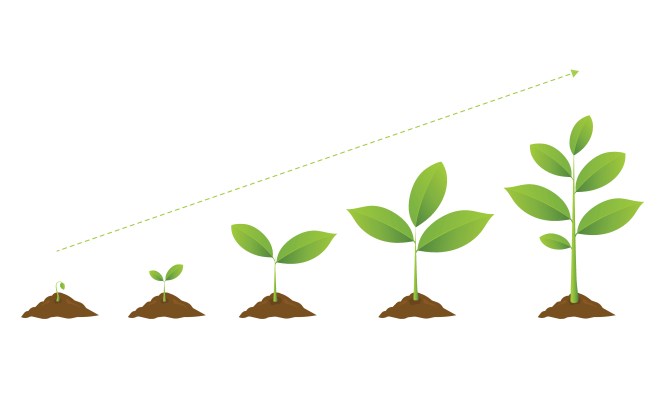Venture investors are pouring billions of dollars into feeding their hunger for food and agriculture startups. Whether that trend line is due to enthusiasm for the sector or just broader heavy investing in the VC space is much less clear.
According to a recent report published by AgFunder – a VC and investing marketplace focused on the agriculture and food sectors – the “AgriFood” space is booming. Using data from Crunchbase and several other data partners, the organization published its “2018 AgriFood Tech Investing Report” this morning, finding that investment in AgriFood companies increased 43% year-over-year, reaching $16.9 billion in 2018.
AgFunder classifies AgriFood tech as “the small but growing segment of the startup and venture capital universe that’s aiming to improve or disrupt the global food and agriculture industry.” Their definition is intentionally broad, encompassing everything from crop and livestock biotech, property management systems, and payments, to biomaterials and meat alternatives, all the way up to tech platforms for restaurants, grocers, deliveries and at-home cooks.
While some of the AgriFood tech categories – such as delivery or restaurant software – have long been popular destinations for venture capital, we’re now seeing a more diverse array of startups innovating across the entire food supply chain. According to the report, expansion in AgriFood is fairly consistent across upstream (agricultural and farming) subsectors to downstream (more consumer-facing) subsectors, with each group growing roughly 44% and 42% year-over-year respectively.
The data also shows growth occurring across almost all deal stages. AgriFood saw huge increases in the average deal size and total investment for late-stage companies in particular, as venture-backed startups have grown to global scale. And penetrating and attracting capital from international markets seems more feasible than ever. AgriFood investing, which traditionally has been largely US-centric, is rapidly becoming a global phenomenon, with more than half of total funding – and some of the largest rounds – now coming from companies and investors outside the US.
And with the space also now yielding billion-dollar exits and investment rounds – including a $1 billion round for Indian food delivery company Swiggy led by Naspers – AgriFood tech appears to be reaching a stage of maturity where scale and attractive returns are being realized on a more consistent basis, which ultimately should help fuel the flywheel of continued investment.

Zume Pizza is another company in the food-sector that dominated headlines after an investment from SoftBank’s Vision Fund took its valuation north of $1 billion.
While the level of growth in the space is eye-grabbing, disruption in the AgriFood industry seems long overdue. Ranked as one of the least digitized verticals by McKinsey, the agriculture and food industry has been plagued with inefficiencies and negative externalities related to the environment, health, waste, and a swath of other issues.
Is AgriFood really an exception to strong currents in venture?
It’s unclear whether the rise in investments in AgriFood is actually the result of growing investor preference for the space in particular, or rather just an outcome from growth in venture capital broadly.
Venture capital was deployed at record levels in 2018, which many attribute to more capital being available from more – and larger – venture funds. And when looking at the entire venture landscape across sectors rather than looking at AgriFood’s growth in isolation, the roughly 40% year-over-year growth in investment is actually in-line with – or even slightly below depending on the dataset used – the tick ups in VC dollars as a whole.
Much of AgriFood investment also remains dominated by the same consumer-facing categories that have long led the space. Out of the 14 subsectors broken out in the AgFunder report, just three categories (Restaurant Marketplaces, eGrocers and In-Store Retail & Restaurant Tech) alone make up over half the total invested dollars.
Restaurants and eGrocers, specifically, remain the two largest categories by far, accounting for 23% and 21% of investment respectively. While that might mean ample opportunity to innovate still exists in upstream and more enterprise-oriented markets, it also suggests that investment preferences within the AgriFood umbrella haven’t shifted all that much.
Similarly, an especially positive takeaway for the sector from the AgFunder report was the 14.5% increase in the number of AgriFood seed stage deals, given the downward trend in seed rounds across the broader venture community.
The data point seemed even more compelling given most of the seed activity involved companies dipping their toes upstream, which suggests entrepreneurs are taking advantage of the clear innovation gap and lack of attention on that side of the industry. Yet, the growth in seed also comes after what the report even describes as a “big drop off” in 2017 making it less clear whether the seed market in AgriFood is actually “thriving” or just returning to baseline after a particularly weak year.
That’s not to take away from the development of a young and budding investment category, but instead to make a distinction between cause and effect. Is the Valley making a push into AgriFood tech or is it pushing more capital everywhere including agriculture and food? Data across venture suggests that – at least in part – the popularization of AgriFood can be largely attributed to the broader popularization in VC rather than the other way around.
Regardless of the cause, the AgriFood sector is undoubtedly swelling at an impressive clip, which is assuredly a good thing. More young companies and entrepreneurs are finding interesting areas to dedicate their time that are ripe for disruption – and they’re getting more support and capital than ever to do so. The AgriFood sector has had a compelling growth path with a long runway ahead, which ultimately bodes well for finally seeing innovation in the analog verticals that have tremendous influence on the environment and global health.

